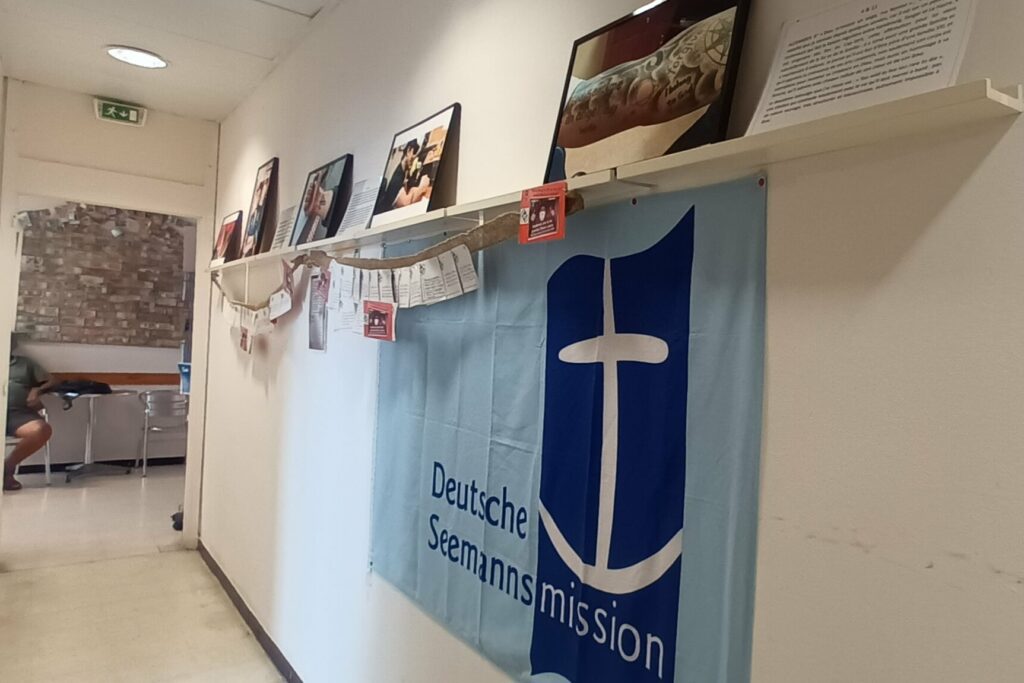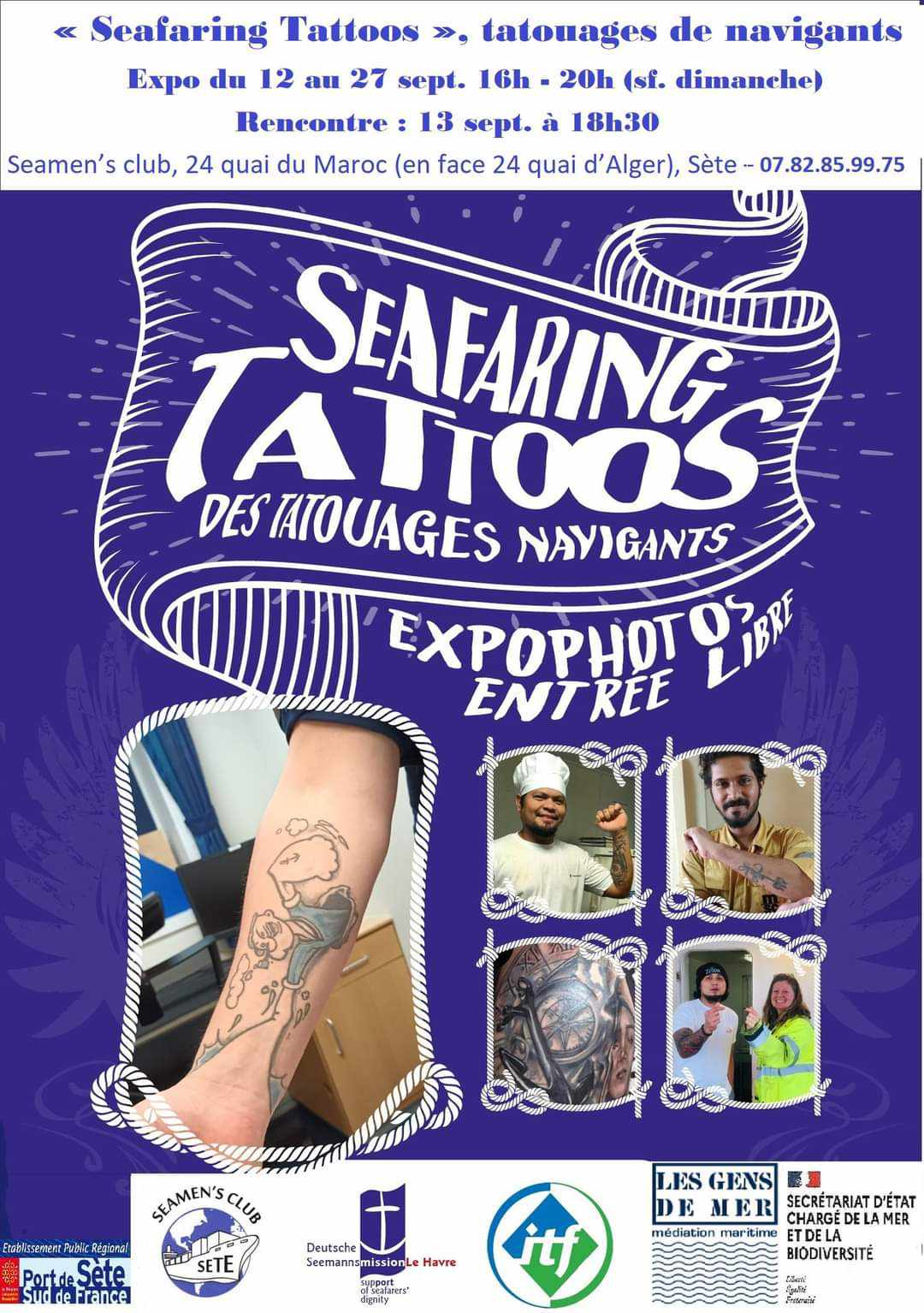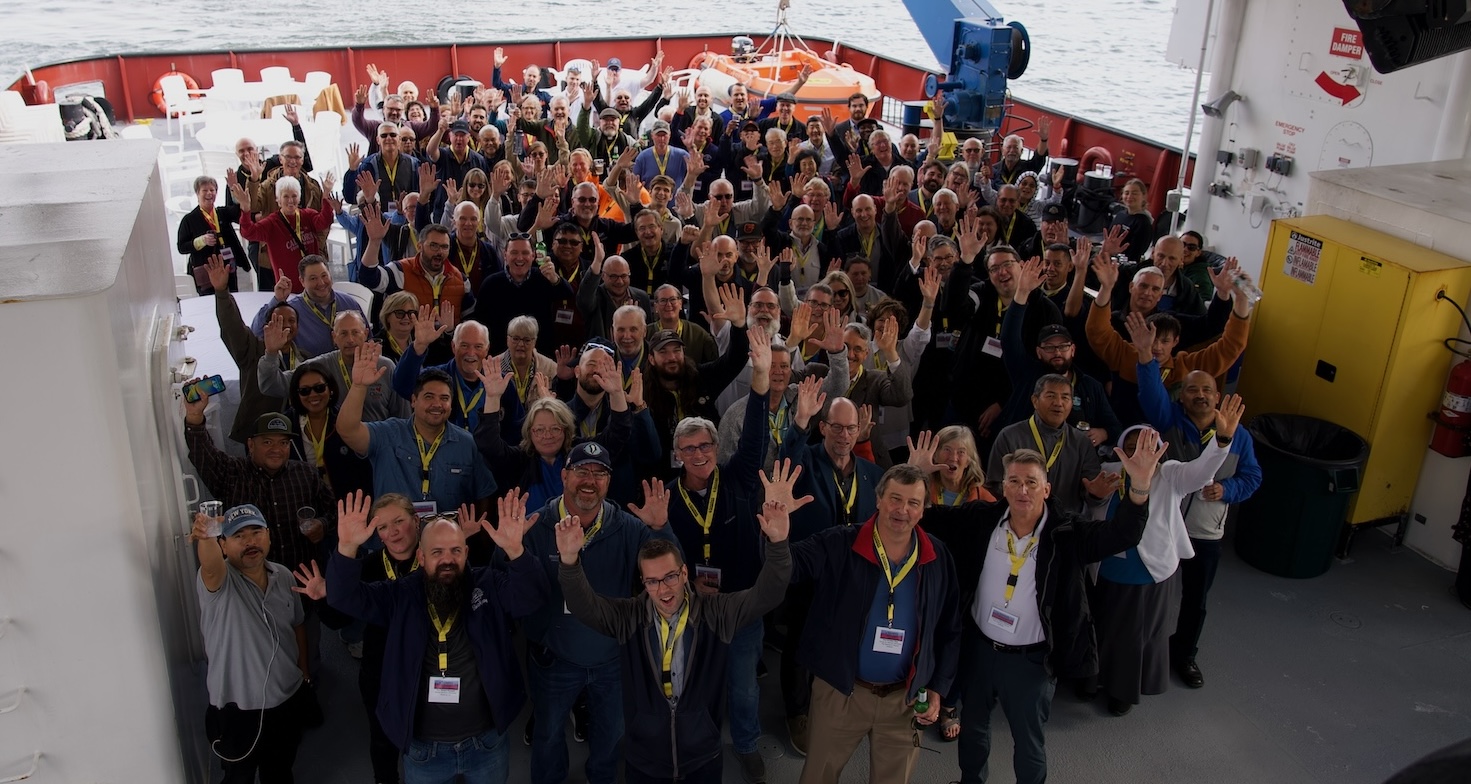At the Seamen’s Club in Sète, France, an exhibition titled “Seafaring Tattoos” is drawing attention for its intimate look into the lives of seafarers through the art they carry on their skin. With photos by Silvie Boyd, Chaplain of the Deutsche Seemannsmission in Le Havre Port, the exhibition aims to make visible the often-invisible seafarers who labor across the oceans. Boyd explained that the idea for the exhibition arose from the growing popularity of tattoos both onshore and aboard ships. “Tattoos have become quite popular nowadays, both onshore and onboard ships,” she noted. “I thought it would be an effective way to engage the public in the challenges seafarers face daily.” By focusing on a modern and relatable medium like tattoos, Boyd hopes to bridge the gap between life at sea and life ashore, using the art form as a tool to draw interest from those unfamiliar with seafarers’ unique struggles.

The exhibition was made possible through collaboration and financial support from ITF Le Havre, Seamen’s Club Rouen, and the Deutsche Seemannsmission Le Havre. Boyd credited the president of the Seamen’s Club in Rouen for the original idea of using photographs of tattoos as a way to humanize seafarers and make their stories more accessible to the general public. “We wanted to use these photographs of seafarers’ tattoos to make their stories visible to a broader audience,” she said. “The images allow people to view seafarers in a different, more personal way.” The exhibition provides a rare glimpse into the individual lives of seafarers, with each tattoo representing a deeply personal experience, belief, or story.
The exhibition, currently running in Sète, has already traveled from several locations, including the with the union in Le Havre and the Seamen’s Club in Rouen, where it was first showcased. Boyd hopes it will continue to gain momentum and expand to other international locations, including Alexandria in Egypt. “We have expensive painting paper that gives depth,” Boyd explained, describing the striking presentation of the photographs. “It has a three-dimensional effect, giving the impression that the images have depth without any glass in front.”
Boyd’s primary goal with the exhibition is to offer a more complete picture of seafarers—not just as workers performing vital tasks on ships, but as individuals with rich, complex personal histories. “Our aim is to present seafarers as individuals with their own life stories, not just as people performing jobs aboard ships,” Boyd emphasized. By focusing on their tattoos, which often reveal significant aspects of their identities, the exhibition aims to challenge stereotypes and inspire empathy among viewers. Boyd also noted that the exhibition opens up discussions on gender and diversity in the maritime world. For example, some of the tattoos displayed belong to a female British seafarer who is Black, highlighting the diversity of people in the industry.
The exhibition has already generated significant interest, though some reactions were initially unexpected. In some instances, visitors mistook the event for a tattoo convention. “At first, some people misunderstood the exhibition, thinking it was more like a tattoo convention,” Boyd said. “But once they realized it was more about the personal meaning behind the tattoos, they were moved.” Many seafarers have crosses, images of Jesus, or the Virgin Mary tattooed on their bodies—symbols that often carry them through difficult and dangerous times at sea. For Boyd, this aspect of the exhibition is particularly significant, especially in a country like France, where the public display of religious symbols can be a sensitive topic. “It’s a reminder that faith plays a crucial role in the lives of many seafarers,” she added, “especially when they face natural disasters at sea that could take their lives in an instant.”
Feedback from visitors has been overwhelmingly positive, with many describing the exhibition as an eye-opener. Boyd believes the exhibition has succeeded in reaching a new audience—people who might not typically attend maritime-themed events but are drawn in by the familiar medium of tattoos. “Many visitors have left comments saying it was an eye-opener, especially for those unfamiliar with seafaring life,” she shared. The exhibition not only serves as a window into the lives of seafarers but also fosters a sense of empathy, inviting viewers to see them as complex individuals with unique stories, rather than merely as workers fulfilling a role.
As a port chaplain, Boyd views this exhibition as an extension of her work, which often involves building personal connections with seafarers. “It’s part of my job to show genuine interest in the person I’m speaking to,” she said. “Many seafarers are proud of their tattoos, and they see it as a sign that I care about them as individuals.” Boyd recounted one seafarer who allowed his tattoo to be included in the exhibition but chose not to explain its significance. The seafarer remarked: “I believe that art should leave room for personal interpretation, the viewer can decide for themselves what the tattoo means.”
In the end, “Seafaring Tattoos” is more than just an exhibition—it’s a powerful narrative about the lives, struggles, and stories of seafarers, told through the intimate art they carry with them. For Silvie Boyd, it’s a way to bring these often-unseen individuals into the spotlight, fostering understanding and empathy for their unique journeys.





